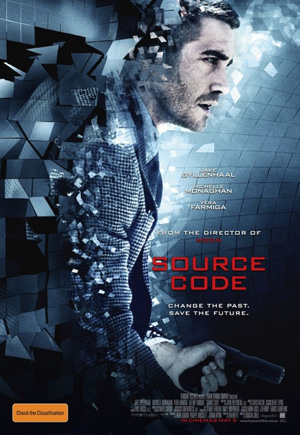Source Code mesmerizes viewers
When a lightbulb is turned off, it continues to glow for a little while afterward. The same occurs for the human brain when one kicks the bucket, and by combining this phenomenon with highly sophisticated integration of synapses in the brain using a machine called the source code, one can enter and replay the last few minutes of someone’s life.
According to the movie Source Code, anyway.
In an effort to discover the identity of a bomber of a Chicago passenger train, Air Force Captain Colter Stevens is sent into the body of history teacher Sean Fentress. Stevens has eight minutes to find the bomber until the train explodes again, but each time he fails he must try again. And again. And again.
Each time the scenario is exactly the same, and each time Stevens wakes up to the sight of Fentress’ companion, Christina. Inevitably Stevens develop a close relationship with her, even going to lengths to prevent her death that has already happened.
Her death is unpreventable, because traveling in the source code means revisiting a recording of past events from the point of one person, not the actual past. Therefore, neither changing the future, nor saving any of the train passengers, is possible.
Does that stop the guy from getting the girl in the end? Of course not.
This science fiction thriller had me questioning more than a few of its premises, including how they even managed to recover Femtress’s remains from the aftermath of the exploded train in the first place. How else would the scientists have connected Stevens with Fentress’s mind without physical parts?
The directors of the film solved most of these incongruities by employing the use of alternate realities and, apparently, the ever-placating phrase, “It’s just a movie”, which it is. It’s hard to complain unless you can wrap your head around the Inception-worthy concept of entering different realities and times while not affecting the future, though put that way it seems to make more sense than I thought it did in the theater. The frequency of explosion scenes that could rival that of Inception may have just distracted me from thinking clearly.
Source Code has its moments of glory, particularly how and when the bad guy was finally caught, and, though I say it begrudgingly, the sappy ending. Personally, the chemistry between Christina and Stevens (who remained in and continued his façade of Fentriss’s body) didn’t work for me, but small sacrifice over all for a satisfactory closure, plot-wise.
As cheesy as the story turned out to be, Source Code provoked ethics about the greater good over one man. Revealing how that issue comes into play would take the fun out of experiencing the movie your self, so go out and see it.

